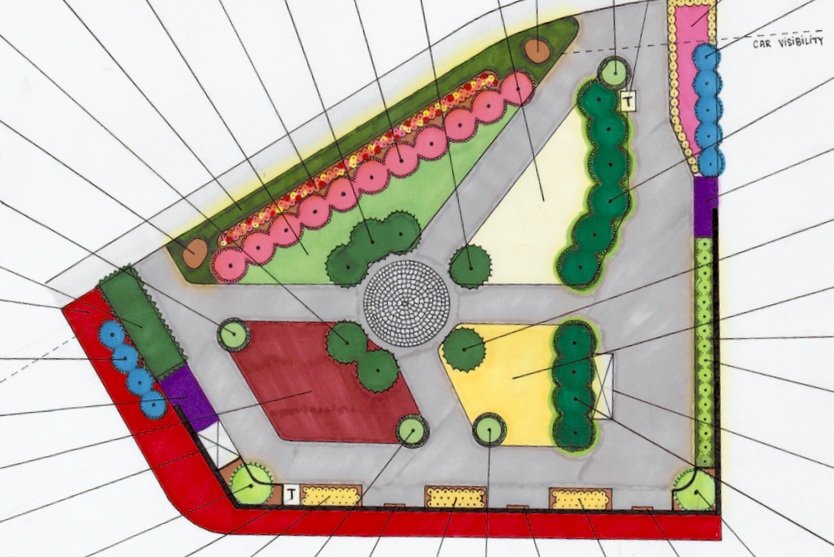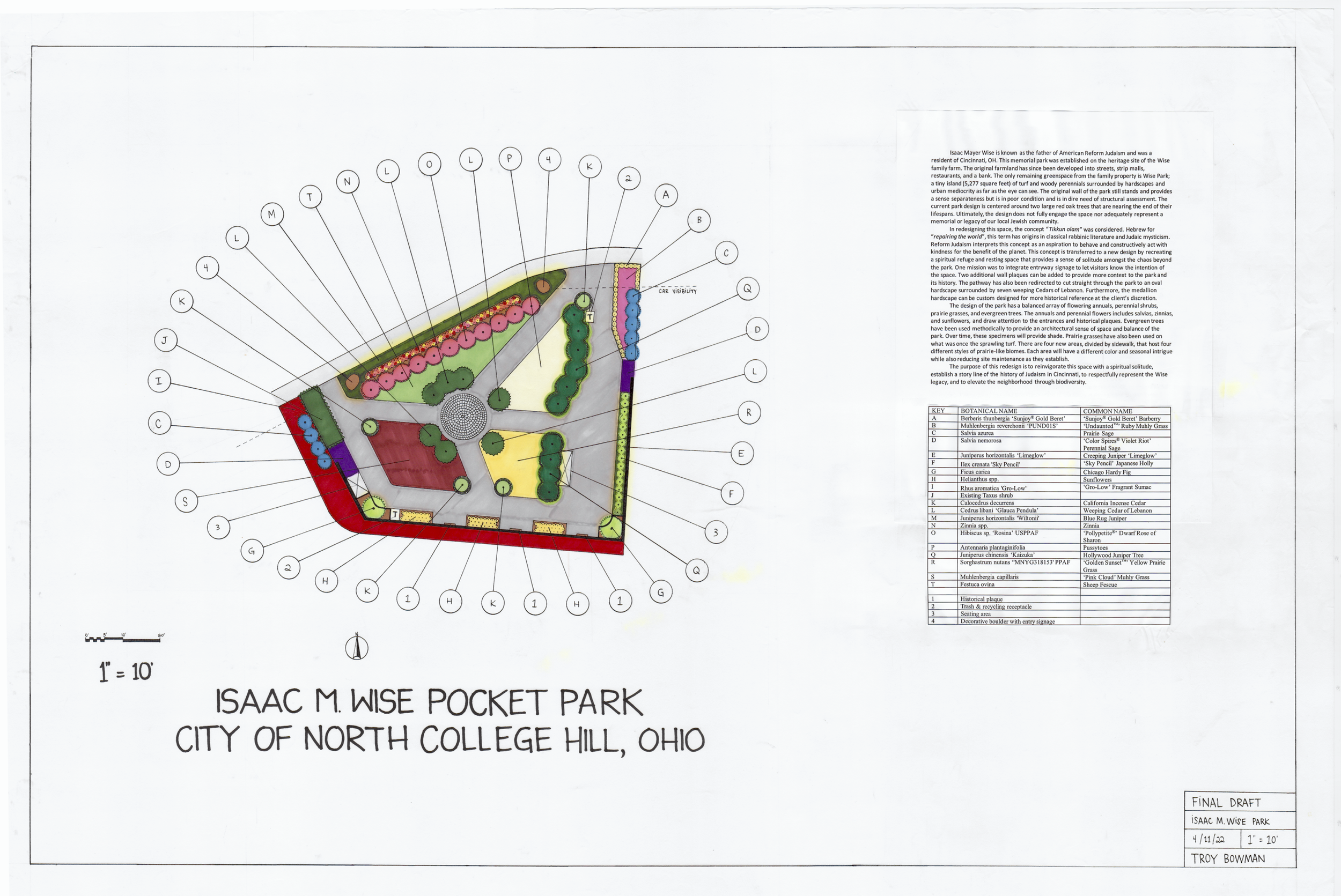
Project Summary
Isaac Mayer Wise is known as the father of American Reform Judaism and was a resident of Cincinnati, OH. This memorial park was established on the heritage site of the Wise family farm.The original farmland has since been developed into streets, strip malls, restaurants, and a bank. The only remaining greenspace from the family property is Wise Park; a tiny island (5,277 square feet) of turf and woody perennials surrounded by hardscapes and urban mediocrity as far as the eye can see. The original wall of the park still stands and provides a sense separateness but is in poor condition and is in dire need of structural assessment. The current park design is centered around two large red oak trees that are nearing the end of their lifespans. Ultimately, the design does not fully engage the space nor adequately represent a memorial or legacy of our local Jewish community.
In redesigning this space, the concept “Tikkun olam” was considered. Hebrew for“repairing the world”, this term has origins in classical rabbinic literature and Judaic mysticism. Reform Judaism interprets this concept as an aspiration to behave and constructively act with kindness for the benefit of the planet. This concept is transferred to a new design by recreating a spiritual refuge and resting space that provides a sense of solitude amongst the chaos beyond the park. One mission was to integrate entry way signage to let visitors know the intention of the space. Two additional wall plaques can be added to provide more context to the park and its history. The pathway has also been redirected to cut straight through the park to an oval hardscape surrounded by seven weeping Cedars of Lebanon. Furthermore, the medallion hardscape can be custom designed for more historical reference at the client’s discretion.
The design of the park has a balanced array of flowering annuals, perennial shrubs, prairie grasses, and evergreen trees. The annuals and perennial flowers includes salvias, zinnias, and sunflowers, and draw attention to the entrances and historical plaques. Evergreen trees have been used methodically to provide an architectural sense of space and balance of the park. Over time, these specimens will provide shade. Prairie grasses have also been used on what was once the sprawling turf. There are four new areas, divided by sidewalk, that host fourd ifferent styles of prairie-like biomes. Each area will have a different color and seasonal intrigue while also reducing site maintenance as they establish.
The purpose of this redesign is to reinvigorate this space with a spiritual solitude, establish a story line of the history of Judaism in Cincinnati, to respectfully represent the Wise legacy, and to elevate the neighborhood through biodiversity.

